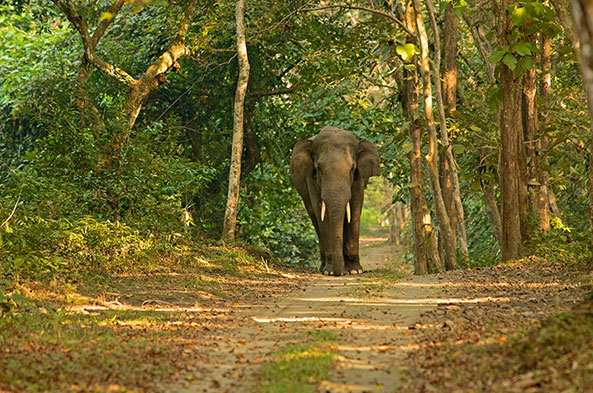
The Bird’s Word Blog
Top 15 Animals to Look for on Safari Tours in India

So you’ve decided to go on a safari tour in India—but now you’re wondering, what animals will you see? Safari tours in India vary depending on who runs them, but with many years of guiding trips under his belt, our expert wildlife guide Avi knows where to go and what to expect once you get there. Here, he shared with us the top 15 animals to look for while on safari in India.

Top 15 Animals to Look for on your Indian safari
-
-
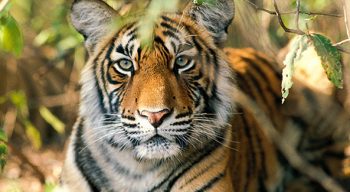
Bengal Tiger Bengal Tiger: The national animal of India, the population of Bengal Tigers was declining at an alarming rate until the international ban on tiger trade in 1993. By 2010, the population of tigers in India was estimated at around 1,800, and by 2014, at around 2,200. Solitary creatures who scent mark their territory, the Bengal tiger is primarily found in India, though they have been spotted in other east Asia countries, such as Nepal and China.
- Asiatic Lion: Typically lions are associated with Africa, and for good reason. Of the roughly 20,000 lions left in the wild, almost all are found in Africa, with one notable exception: the Asiatic Lion. Once found throughout West Bengal in the east and Rewa in central India, they are now only found in Gir National Park and Wildlife Sanctuary.
- Snow Leopard: The exquisite, smoky-grey fur of the Snow Leopard is patterned with dark-grey to black rosettes which helps camouflage them against rocky slopes. Most active at dawn and dusk, they are solitary animals, though sometimes male and female pairs might be seen together during mating season. And a final fun fact: snow leopards do not roar!
- Indian Leopard: Elusive, solitary, and largely nocturnal, Indian Leopards are known for their climbing ability. It’s not uncommon to see them resting on tree branches with their kill hanging next to them in the tree. They are also powerful swimmers, very agile, and extremely fast, able to reach a running speed of 36mph.
- Indian Elephant: If you’ve seen elephants in Africa, expect Indian Elephants to look a bit different. In general, they are smaller than African elephants, with smaller ears but broader skulls and larger trunks. As with the Bengal Tiger, the Indian elephant has also seen a significant decrease in its population, declining in numbers at least 50% in three generations thanks to habitat loss, degradation and fragmentation.
- Indian Rhinoceros: Weighing as much as an SUV, the Indian Rhinoceros is a formidable opponent, known for its single horn. Sadly, that horn has also been their downfall, with many animals being killed so their horn could be used in various medicines. They prefer the cooler temperatures of morning and afternoon, and odds are if you see them in the middle of the day, they’ll be submerged in water to beat the heat.
-
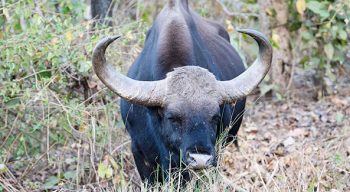
Guar Gaur: Also known as the Indian bison, the Gaur is the tallest of the wild cattle species. It’s a strong and massively built species, and due to its formidable size and power, gaur have few natural predators besides humans.
- Wild Water Buffalo: Similar to the Gaur is the Wild Water Buffalo, which is a bit stockier and shorter-legged than the Gaur. These massive animals can reach up to 2,600 pounds. Watch for their heavy horns that spread up to 79 inches, which is bigger than the horns on any other related species.
- Indian Wild Dog: The dhole, or Indian Wild Dog, is genetically close to species within the genus Canis. It’s a very social animal, living in large clans that typically comprise about 12 individuals, but groups of up to 40 have also been seen.
-
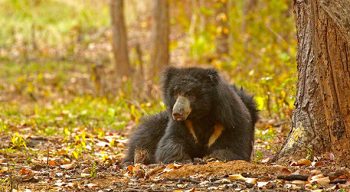
Sloth Bear Sloth Bear: The Indian Sloth Bear has a shaggy black coat, long muzzle, protruding lip, and a white V-shaped patch on the chest. Sadly, the species was abused for hundreds of years, taken into captivity as “dancing bears,” first for entertainment for emperors, and later for tourists and villagers. Now protected, the last known “dancing bear” was rescued in 2009.
- Ruddy Mongoose: The Ruddy Mongoose is a feisty little animal—and by little, we mean between 2 to 4 pounds at their largest. But by bristling their fur, they appear much larger, scaring off predators. They are day and night hunters, and their diet consists of snakes, small lizards, rodents, and dead carcasses.
- Jungle Cat: Also called the reed cat or swamp cat, the jungle cat is a large, long-legged cat that stands nearly 14 inches at its shoulder and weighs up to 35 pounds. Solitary in nature, jungle cats only interact in the mating season.
- Asiatic Jackal: Take an English story about a trickster fox, set the story in India, and the trickster animal becomes the Asiatic Jackal. It’s similar to a small grey wolf but with a more slender build, a narrower, more pointed muzzle, a shorter tail, and a lighter tread. But unlike wolves, it’s an opportunistic eater, with its diet changing based on season and habitat.
- Bengal Fox: Bengal foxes are mainly crepuscular, meaning they are most active during dawn and dusk. In the heat of the day, they hide under vegetation, or they go into their own large and complex dens that have multiple chambers and escape routes. Occasionally, you can see them basking at a vantage point around sunrise or sunset.
-
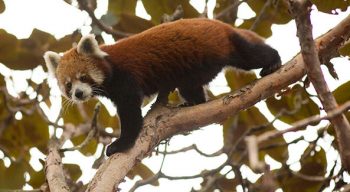
Red Panda Red Panda: An adorable little animal, the Red Panda is slightly larger than a domestic cat. Also known as a cat bear or lesser panda, it has retractile claws and, like the Giant Panda, it has a “false thumb” which is really an extension of the wrist bone. Interestingly, though, it is more closely related to the racoon and skunk than it is to the Giant Panda.
-
Go on Safari with Journeys International
Journeys offers outstanding wildlife safari options in India, most of which can be customized for you. Trips include Big Five of India, Taj Mahal, Temples, and Tigers, In Search of the Snow Leopard, and South India Treasures. Or, read one traveler’s story about her Indian safari. Want to learn more? Let us know and we’ll be in touch soon to answer all of your questions.

Design an adventure with Journeys International!
With over 40 years of experience, we create experiences that match your goals.
Start Planning

